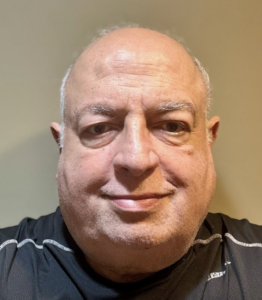
Fusion: View from the Top Series
October 23 @ 11:00 am - November 13 @ 12:00 pm


Pulsed Power for Magneto-Inertial Fusion Energy and for Safeguarding the Nation
Wednesday, October 23rd | 11 - 12 PM | 3110 Etcheverry Hall
Abstract: Fuse has developed and proven the viability of the world’s highest energy pulsed power driver module of its kind named TITAN (1TW) that uses impedance-matched Marx generators. TITAN’s experimental results have been recently published in Nature Scientific Reports. In this talk, we will present the technology path, applications, and roadmap Fuse is pursuing.
Biography: JC founded Fuse in 2019, in lieu of going to college and currently serves as the CEO of Fuse. Fuse is headquartered in San Leandro, CA and has a facility in Napierville, QC in Canada where cutting-edge pulsed power facilities and a Terafactory are being built to accelerate the world’s transition to fusion energy while safeguarding humankind. Fuse is growing the team and looking for humble, driven, and committed scientists and engineers. For more information, please check out the Fuse website (www.f.energy) or reach out to hello@f.energy.

Do the Right Thing: The case for Laser-plasma instability (LPI) Control and the STUD Pulse Program in Inertial Fusion Energy (IFE)
Wednesday, November 6th | 11 - 12 PM | 3110 Etcheverry Hall
Abstract: Since the inception of the field in the early 1970s, of trying to compress and heat a fuel pellet to millions of degrees to instigate thermonuclear fusion reactions and propagating burn, an initial and persistent showstopper was LPI. Laser-plasma instabilities, first thought beneficial, then seen as an obstacle, imperiled Antares, the big CO_2, 10 µm laser at LANL, Shiva, at 1 µm at LLNL, as well as the biggest 1 µm lasers at KMS fusion at Ann Arbor, at NRL on the Potomac in DC, and at LLE in Rochester, NY. Resonance absorption (RA) at the critical density as well as Stimulated Raman Scattering (SRS) and the Two Plasmon Decay Instability (2wp, TPD) were the major culprits with Stimulated Brillouin scattering (SRS) and filamentation (FIL) waiting in the wings to take over, if ever the former could be dealt with at all.
In the beginning things were simpler and dirtier. Density gradients were so short (targets were so small, of the order of a 100 µm in diameter) that not much by way of three wave resonant interactions (which dephase) could happen. This is still true at LLE. And the lasers had large scale 2 to 1 to 10 to 1 variations in their transverse profiles that were both inevitable due to glass lasers amplification characteristics, rendering all experiments on LPI quasi irreproducible. So we had few shots per day and no repeated detailed observables. There were Hohlraums however at the labs and indirect drive where gradient lengths were much longer and much more laser energy existed and thus higher Intensitues deployed. There is where drastic effects of LPI were first observed experimentally and where shorter wavelengths were quickly adapted. No LPI problem was solved head on. Workarounds were sought. It all came to a head on NIF and during the NIC where 100’s of KJ of incident energy was miscoupled or squandered out of the plasma. Such problems persist today despite the desire to build bigger lasers where they will occur again and again.
The situation in the 70’s changed somewhat with RPP, SSD, ISI, a soup of techniques meant to smooth out beams and not only help with heat transport uniformity but also perhaps help with LPI as an afterthought. Nothing until STUD pulses was ever conceived or engineered specifically to combat LPI at any laser intensity except for the intuitive notion that temporal incoherence should be good to combat resonant processes (add bandwidth!). This is naive and weak as an idea because it hides the simple fact that this may be true only near threshold of the most unstable mode, that is in an exceedingly narrow parameter regime. Just near threshold that strains laser intensity, gradient lengths, wavelengths and temperatures all at once. To combat LPI, what is needed is a universal and adaptive method that is not akin to throwing a single switch and saying “large enough Bandwidth, no LPI, no problem!” As proponents do to this day, but to learn to control LPI dynamically given a set of changing plasma conditions that are unknown a priori and generally unknowable. This mad challenge is what the STUD pulse program tackles and conquers. STUD pulses are Spike Trains of Uneven Duration and Delay. They require repeated on-off switching of the many ns long laser pulses at the sub-ps time scale, and spatially scrambling laser speckle patterns on the same rough time scale and the interweaving of crossing beams (synchronization).
We will argue that without these elements success is illusory and only at low intensities, with small targets, and very short wavelengths. If any of that is to be relaxed, one must resort to STUD pulses.
We will show when and how the STUD pulse program works theoretically, computationally and experimentally in modest circumstances for the latter, so far (using just 10 spike sequences compared to continuous equally wide unmodulated pulses, but with data spanning many 1000’s of shots).
A primary ingredient for the modern era of LPI control is high rep rated lasers (we have had 3000 shot campaigns already over a month’s span each). A second essential ingredient is ML, and automated techniques of varying crucial STUD pulse parameters and finding optimum solutions without exhaustive searches (using smart search algorithms) informed by previous data and wide ranging simulations encapsulated in ML assembled surrogate models that can be queried rapidly. A third is advanced laser pulse shaping techniques to produce arbitrary waveforms on the sub-ps time scale lasting for multiple ns. Also, diagnostic with this same time-bandwidth product (exceeding 10^3 or 10^4). Experiments so far attain 6-10.
This is the revolution to come that will help, in due course, companies like Xcimer and Fuse to deliver laser energy on target with LPI effects enhanced or suppressed (ie controlled) as the circumstances warrant. No more invoking “just near threshold” bandaids.
This work is supported by the ARPA-E OPEN program, FES HEDLP program, and previously by NNSA HEDLP and AFOSR plasma programs.
Biography: Bedros Afeyan is a plasma physicist specializing in laser-plasma Instability physics, their control, their kinetic and fluid modeling, their analysis and their laser innovation path to success. His PhD is from the University of Rochester on theoretical plasma physics.
Zoom Webinar Registration: https://berkeley.zoom.us/webinar/register/WN_sHNBl8dnTOuCBRuZO4KWpA#/registration
4153 Etcheverry Hall, MC 1730 (map) University of California
Berkeley, California 94720
510-642-4077
510-642-5760


